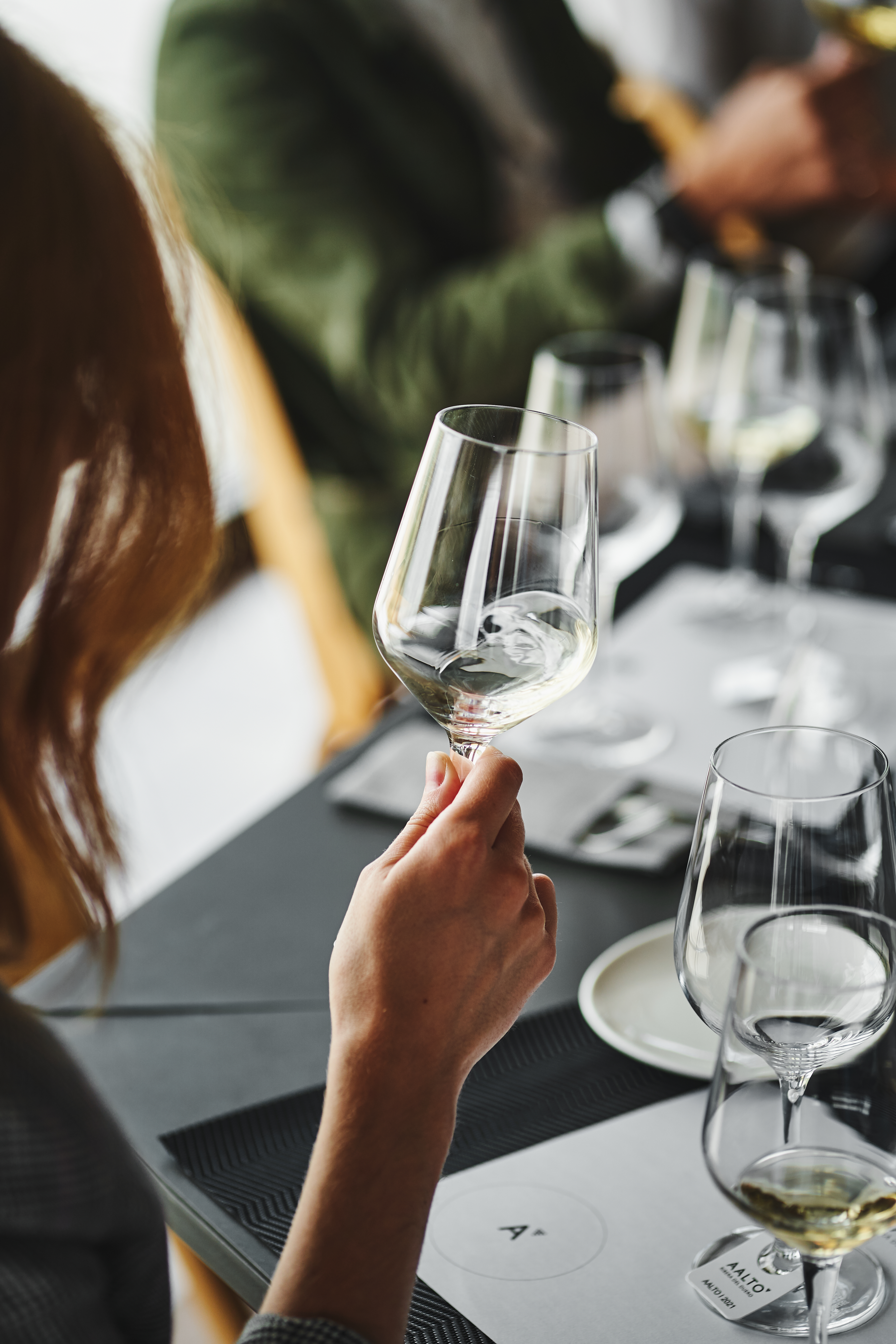It is not necessary to know a lot about wines to enjoy a good tasting, and furthermore, we are going to provide a guide with three simple steps so that you can get closer to this world using (almost) all your senses.
It is essential to uncork the bottle and pour yourself a little wine to observe it and start tasting through your eyes. In this first visual phase, we can evaluate aspects such as the wine’s color, the intensity of that color depending on whether it is red, white, or rosé, and the clarity, meaning the wine should be clean.
In the second phase, without swirling the glass, bring it close to your nose to identify the primary aromas coming from the fruit, nature, and terrain.
To allow the wine to come into contact with oxygen and to analyze the secondary aromas, then gently swirl the glass; as you may have seen most people do. These aromas occur during grape fermentation or in the winemaking processes. To further enhance the aromas during this olfactory phase, if you swirl the glass a little more, you can distinguish tertiary aromas or “bouquet,” which develop during and after the wine aging process. Can you recognize fruits, spices, or floral notes? Don’t worry if you can’t identify each aroma, enjoy the exploration process!
Now take a small sip of wine and let it reach all parts of your mouth to capture the basic flavors with your taste buds; the wine that achieves a perfect balance between these flavors will be a rounded wine. Also, pay attention to the sensations on the gums and tongue, which leave us with rough and rough sensations or, on the contrary, silky, warmth and freshness, structure, and body.
The finish is the impression the wine leaves on you after swallowing it.
Remember that tasting is a personal experience, enjoy the process and dare to try different wines to discover your preferences!



Recent Comments